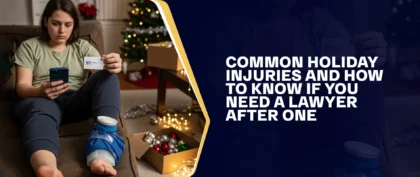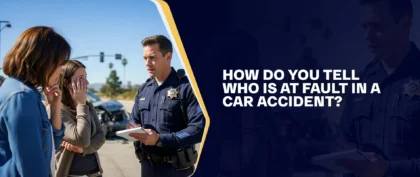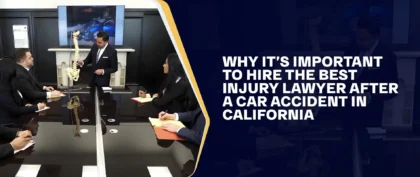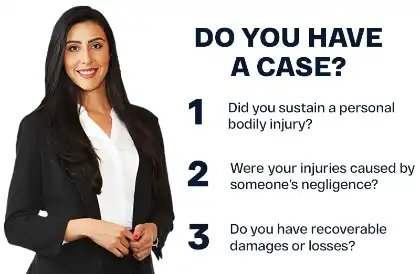Table of Contents

known to be more dangerous than daytime driving. Research has repeatedly shown that more accidents occur at night, underscoring the importance of drivers exercising greater caution when driving after dark. Failure to do so can make a driver legally responsible (liable) for causing an accident. This means that they may be held responsible for compensating injury victims for the losses they sustained in the accident.
Our experienced California car accident lawyers at Arash Law are dedicated to helping clients pursue compensation for the injuries and losses they incur following a crash. Let our car wreck lawyers advocate for your legal rights so that you can focus on getting better. Schedule your free initial consultation by calling (888) 488-1391.
Nighttime Car Accident Statistics: ‘The Wrecks’ Come Out At Night
- Driving at night can be scary, according to The National Safety Council, and the risk of a fatal crash is three times greater at night than in the day.
- The Insurance Institute for Highway Safety indicates that drivers face increased risks during evening hours, especially as daylight shifts to darkness.
- The National Highway Traffic Safety Administration analyzed seatbelt use in 2005 traffic fatality statistics. Notably, it was found that 56% of victims who were killed at night were not wearing a seatbelt, but only 42% of the victims killed during the day failed to use one. Seatbelt use has long been known to reduce the severity of injuries sustained in a traffic accident. When a victim is not wearing a seatbelt, their injuries are more likely to be severe or even fatal.
- Like many states, California has adopted a Graduated Driver’s License program for teen drivers. One common feature of these programs is a prohibition on nighttime driving. Newer teen drivers are particularly susceptible to the risks associated with driving at night. Insurance data consistently shows an increase in teen driver accidents at night. California law prohibits teens from driving between 11 p.m. and 5 a.m. (except for school-related purposes).
Common Causes Of Nighttime Car Accidents In California
1. Poorer Visibility At Nighttime
Drivers simply cannot see as well or as far at night as they can during the day. This effect is worse for drivers who suffer from visual impairments. The end of Daylight Saving Time also contributes to poor visibility.
Some nights are longer and start sooner, so drivers need to be extra careful during the extended period of poor visibility.
Here are some tips to help improve your ability to see at night:
- Aim your headlights correctly for increased visibility.
- Dim your dashboard and look away from oncoming lights to preserve your night vision.
- Keep your windshield clean to eliminate streaks and glare.
- Slow down to give yourself more time to see and react to hazards.
2. Nighttime Blindness Is A Real Thing
Night blindness is an inability to see clearly in dim light, which can be due to a deficiency of vitamin A or a retinal disorder. This makes nighttime driving even more dangerous. Symptoms include:
- Decreased vision at night or in poor light.
- Peripheral vision problems.
- Possible loss of central vision.
3. Age-Related Factors (Older & Younger)
As we age, our bodies slow down. Aging can result in many different visual impairments, such as cataracts, glaucoma, and macular degeneration, that are dangerous for drivers. The National Institute on Aging recommends:
- If you are 65 or older, schedule an annual eye examination with your optometrist or ophthalmologist. Ask if there are ways to improve your eyesight.
- If you need glasses or contact lenses to see far away while driving, keep your prescription up to date and accurate. Wear them when you are driving.
- Cut back on or stop driving at night if you have trouble seeing in the dark. Try to avoid driving during sunrise and sunset, when the sun can be directly in your line of vision.
- The same applies to younger or newer drivers, particularly those in their teens, who have little to no driving experience.
4. Fatigued Driving At Night
A survey conducted by the National Sleep Foundation found that more than a third of adult drivers admitted to having fallen asleep behind the wheel. Fatigue can be a particular problem at night when the body is preparing for its usual sleep cycle. It is also a particular problem for those who work at night. Shift work can disrupt the body’s normal sleep patterns, and this can have a lasting impact on workers for months or even years. Many shift workers develop chronic illnesses as a result of extended sleep deprivation. The National Sleep Foundation found that shift workers were more likely to drive while fatigued and almost twice as likely to fall asleep at the wheel.
Whether you’re driving a long distance or just commuting home from work, consider following these tips to help avoid drowsy driving:
- Get a good night’s sleep before you hit the road.
- Take turns driving during long road trips if you’re with someone else.
- Take breaks to divide up long drives.
- Pull over safely and rest as needed.
- Be alert for drivers who are swerving or drifting. Honk or flash your lights to alert them. If a driver does not pull off the road, give that vehicle plenty of space in case you need to stop quickly.
5. Impaired Drivers Are Out More At Night
Because drunk driving is more likely to occur at night, nighttime driving is more dangerous. The 2017 National Highway Traffic Safety Administration data indicate that drivers in fatal nighttime crashes are approximately three times more likely to be intoxicated than those in fatal daytime crashes. (This is consistent with data from other years.) However, alcohol is not the only substance that can impair drivers. Illegal drugs or misused prescription medications can also make it unsafe to drive. Even a prescription medication that is taken as directed can impair your ability to drive safely. Pay attention to the effects that any amount of alcohol or medication has on your body. Read the labels on medications carefully and avoid driving after taking anything that could cause impairment. Ask your doctor about potential drug interactions that could cause fatigue, dizziness, or other symptoms that would interfere with your driving abilities.
6. Heavier Traffic At Night
The evening rush hour often occurs shortly before or after sunset, depending on the time of year. Heavy traffic is a risk factor for collisions. Combined with the added risk of nighttime driving, this can be a dangerous time for California drivers. Use caution with these driving tips:
- Reduce your speed.
- Don’t tailgate.
- Stay alert and use defensive driving techniques.
- Avoid being distracted by your phone, navigation system, in-vehicle entertainment system, or other technology.
7. Distracted Drivers Under The Protection Of Night
Other drivers might not be as vigilant as you. Even though texting and driving is illegal in California, some drivers still do it. The National Highway Traffic Safety Administration reports that more than three thousand deaths occurred on U.S. roads in 2017 due to distracted driving. Don’t become a statistic. Stay vigilant at all times, but especially during nighttime driving. Avoid other drivers who are swerving or showing other signs of distracted driving. Nevertheless, if a collision occurs due to this behavior, distracted driving accident lawyers can assist victims in pursuing damages.
8. More Active Construction Zones
Construction zones are hectic. There are large trucks entering and exiting, changes in traffic patterns, workers in the road, and new signs to read and follow. When added to the decreased visibility of nighttime driving, construction zones become particularly hazardous at night. An important step you can take is to slow down. This will allow your eyes to adjust to low light and give you time to follow signs and figure out new traffic patterns. Watch carefully for any workers on the road.
When handling claims, accident lawyers often consider these potential risks in determining who may be liable for the victims’ losses.
12 Tips For Safer Driving At Night
By combining preparation and safe driving habits, you can help reduce the risks associated with nighttime driving. You can take these tips to help keep everyone safe on the roads at night:
- Check if your headlights and brake lights are in proper working order. Keep your headlights clean.
- Aim your headlights correctly while driving.
- Start using headlights about an hour before sunset. During dusk, the sky is still light, but the road begins to darken. This makes it difficult for other drivers to see you.
- Be cautious when using your high beams to avoid blinding other drivers.
- Dim your dashboard lights. Lights in the car can cause a nighttime glare on your windshield.
- Drive slower. Speed increases your required braking time. Combined with a longer reaction time at night, you are less likely to be able to avoid obstructions in the road, which may result in a speeding-related accident. Speed can also contribute to the severity of injuries and accidents are more likely to be fatal if one of the drivers is speeding.
- Allow more space between you and the car ahead.
- You can avoid nighttime glare by using the day-night feature on your rearview mirror. Keeping your windshield clean will also help improve your visibility.
- Break up long drives with plenty of rest stops.
- Avoid drivers who are swerving or drifting.
- Know when to pull over for a rest.
- Limit distractions when driving at night. Since your vision is not as good as it is during the day, your reaction times will also be slower than normal. This makes it even more important to focus your attention on the road ahead.
Law Enforcement Prevention
Enforcing traffic laws is an important step in addressing dangerous driving behaviors. Issuing tickets for speeding, following too closely, failing to wear a seatbelt, distracted driving, or driving while impaired may help deter these actions in the future. Many law enforcement agencies target nighttime driving problems by increasing patrols during these hours, especially during holidays.
Experienced Injury Lawyers Near Me
Have you or a loved one been injured in an auto accident? The law provides a way for injury victims of a car accident to pursue compensation for their losses. Our car crash injury lawyers at Arash Law have years of experience helping clients navigate the claims process.
Our injury attorneys will advocate for your rights and work to help you seek the damages you incurred as a result of the accident. Contact Arash Law at (888) 488-1391 or complete our “Do I Have A Case?” form here to schedule a free initial consultation with a California car accident attorney.





























